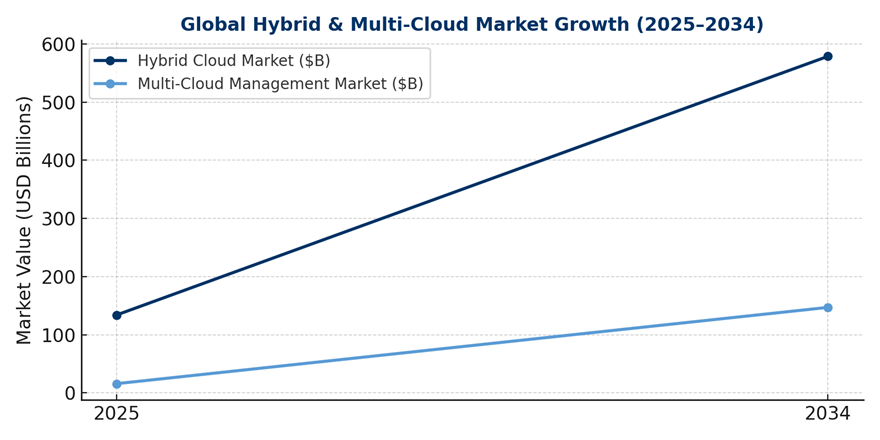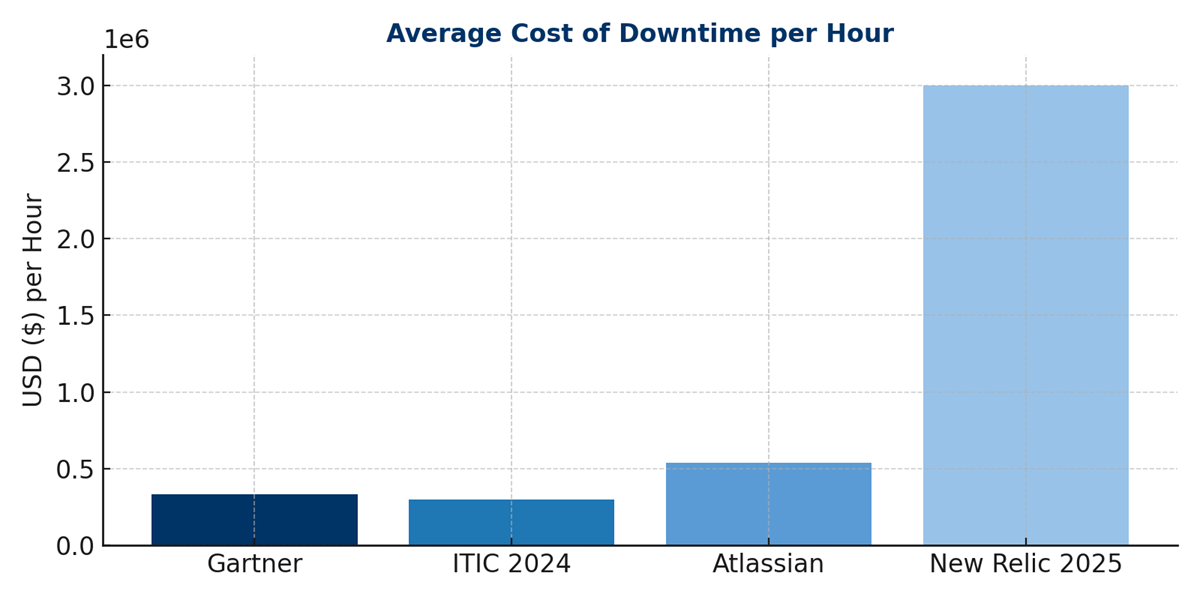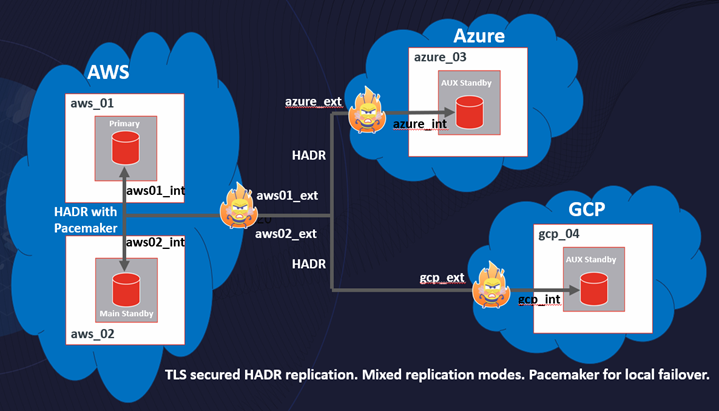Two global cloud outages in October 2025, first at AWS and then at Microsoft Azure, exposed how fragile centralised cloud infrastructure can be. For modern enterprises, resilience begins not at the network or compute layer but at the data layer. Here’s why IBM’s flagship, enterprise-ready database, Db2, has become the foundation for data-driven continuity across multi and hybrid cloud environments.
The Wake-Up Call: Two Outages, One Week Apart
On October 29, 2025, websites for Heathrow Airport, NatWest, Minecraft, and dozens of major brands went offline as a Microsoft Azure outage spread worldwide. The BBC reported an ‘inadvertent configuration change’ that triggered DNS failures, crippling Microsoft 365 and Azure-hosted systems.
Only a week earlier, on October 22, Amazon Web Services (AWS) suffered its third major outage in five years, in its US-East (Northern Virginia) region. The six-hour event affected more than 2,000 companies globally, from retail to media to financial services.
Two incidents. Seven days apart. Two of the three largest cloud providers. As Dr Saqib Kakvi of Royal Holloway University observed, ‘We are effectively putting all our eggs in one of three baskets.’ For executives, the question is no longer whether an outage will occur, but how ready is your data when it does.
The Business and Data Case for Multi and Hybrid Cloud
Enterprises are diversifying cloud deployments not for fashion but for data resilience. Hybrid and multi-cloud architectures ensure that data, the core of every digital service, remains available, consistent, and secure no matter where it lives.
Figure 1 – Global Hybrid & Multi-Cloud Estimated Market Growth (2025 → 2034)
Why Organisations Are Investing in Data-Centric Resilience
- Minimise Downtime & Ensure Business Continuity – Seamless failover between on-prem and cloud keeps critical operations running, and protects against costly outages
- Protect Revenue Streams – Avoid lost transactions, halted production, and business disruption
- Safeguard Reputation – Outages erode customer trust and brand credibility long after recovery
- Regulatory Control & Sovereignty – Keep regulated datasets local under GDPR and DORA.
- Latency & Performance – Bring data closer to users and applications.
- Cost & Flexibility – Use public cloud elasticity for spikes, retain private infrastructure for steady workloads.
- Negotiation Power & Portability – Prevent vendor lock-in and enable multi-region failover.
The result is an architecture where data availability equals business availability.
The True Cost of Downtime and Data Loss
Even brief outages create data gaps, lost transactions, and broken trust chains.
- Gartner estimates downtime costs $5,600 per minute, that’s over $336,000 per hour.
- ITIC (2024) found 90 % of enterprises lose more than $300,000 per hour during outages.
- New Relic (2025) recorded UK and Irish firms losing up to $3 million per hour.
Figure 2 – Average Cost of Downtime per Hour (and Data Impact)
When outages at hyperscalers take down customer-facing platforms, the business impact isn’t theoretical, it’s immediate revenue loss, reputational damage, and in regulated sectors, potential compliance exposure, making the business case for data resilience undeniable.
Db2: Designed for Availability, Proven for Hybrid Reality
Db2 has long been recognised for its High Availability Disaster Recovery (HADR) technology, with over two decades of field-proven deployments across global industries, from banking and telco to government and manufacturing. With Db2’s Hybrid HADR architecture, enterprises can replicate data seamlessly across on-premises environments and multiple cloud providers. If one region or provider falters, another quietly takes over. To the business, nothing happens. To the customer, everything keeps happening. An outage in one provider no longer means disruption. It means a graceful failover.
It’s not theory, it’s been tested and proven in global R&D and production environments.
Db2 HADR:
- Ensures Continuous Business Operations & Minimises Downtime
-
- HADR provides rapid, often automatic failover between primary and standby systems, keeping mission-critical applications online even in the event of a system, network, or site outage, minimising downtime.
- Db2’s HADR maintains synchronous or near-synchronous replication, ensuring the standby database is fully consistent with the primary.
- Pacemaker cluster integration allows for automated local failover in ‘semi-hybrid’ topologies.
- Supports Hybrid and Multi-Cloud Flexibility
-
- With Hybrid HADR clusters, Db2 extends availability across on-premises, private, and multiple public clouds (AWS, Azure, GCP).
- Businesses gain the flexibility to deploy workloads where it makes economic or regulatory sense, without sacrificing resilience.
- It eliminates vendor lock-in by enabling seamless failover between providers — critical in a world where single-cloud dependence has proven risky.
- Reduces Financial and Regulatory Risk
-
- By maintaining continuous data availability across data centres and clouds, Db2 helps companies meet regulatory uptime and data protection mandates (e.g., DORA, GDPR, PCI DSS).
- It also reduces potential service-level agreement (SLA) penalties associated with outages, ensuring contractual compliance and protecting brand value.
- Lowers Total Cost of Ownership (TCO)
-
- Built directly into Db2 (no third-party add-ons needed), HADR avoids licensing or integration costs common in other database environments.
- Integrated TLS encryption ensuring secure replication across regions and clouds
- Efficient log shipping and standby reuse for read-only workloads also help organisations get more value from standby systems, turning resilience into productivity.
Figure 3 – Db2 Hybrid HADR Topology: Data Replication & Failover Flow
Conclusion: Data Resilience is the New Business Resilience
The October outages were not anomalies; they were warnings. A reminder that even giants like Microsoft and Amazon can stumble. And when they do, enterprises that depend on a single cloud will stumble too.
For executives, the path forward is clear:
- Build multi-cloud and hybrid architectures around data availability.
- Use a database engineered for cross-cloud consistency and failover.
- Treat data replication and integrity as strategic assets, not technical features,
Data resilience is the new ROI. And that resilience starts not with a provider, but with a database that can move, replicate, and recover without missing a beat. Db2’s Hybrid HADR Clusters embody that philosophy, delivering continuous availability, secure replication, and confidence that your data is always where you need it, when you need it.
Get in touch with Iqbal Goralwalla, Triton’s Director of Database Services, an IBM Gold Consultant, IBM Champion, and a leading expert in Db2 High Availability and Hybrid-Cloud architectures.
We’d be happy to run you through a live demonstration of Db2’s HADR (High Availability Disaster Recovery) capabilities, walk you through hybrid and multi-cloud setups, and show how to build a truly resilient data strategy.
Email: iqbal.goralwalla@triton.co.uk





